On our most recent visit to Devil’s Fork State Park on Lake Jocassee, we were pleased to find that the premier wildflower of this location, Shortia galacifolia or Oconee Bells were just beginning to bloom. This is a very rare plant, found only in a few mountain counties of North Carolina, South Carolina, and Georgia.
The genus, “Shortia”, was named for Dr. Charles Wilkins Short (1794-1863), a botanist from Kentucky and a friend of Asa Gray, the person who first described and named the plant. The epithet, “galacifolia”, comes from the leaves of the plant, which resemble those of the Galax plant. The leaves of both plants look similar since Oconee Bells and Galax are closely related. The leaves from both plants are round, glossy, evergreen, and low growing. The leaves of Oconee Bells, however, have toothed edges and are generally shinier and more obviously veined.
There is a very interesting story about how this plant was discovered and why it was almost 100 years later before it was named.
Here is the story:
Asa Gray, a renowned botanist from Kentucky, had been haunted by a fragmentary specimen that was languishing in an herbarium in Paris, France. In 1839, Gray visted this herbarium which was the repository of the collection of the famous French botanist, Andre Michaux (1746-1802). Michaux had spent years in the United States — the Carolinas, specifically — collecting and preparing specimens of plants he came across on his wanderings in wild territories. He sent back a great quantity of material, much of it containing unidentified plant specimens. Among the material which was collected in 1788, was a plant that had never been described.
To aid others in relocating this strange plant, he wrote in his journal that the plant could be found in the “High Mountains of Carolina”. He actually gave what he considered pretty good directions except that these directions included only geographical points of interest, not roads or names of towns, since neither were nearby — it was pretty much in the middle of “nowhere”.
For nearly 40 years, botanists and naturalists searched in vain for this rare plant. Turns out they were looking in the wrong place — the plant does not grow in the “High Mountains”, but it grows in the foothills south of the Blue Ridge Mountains.
In 1877, seventeen-year-old George McQueen Hyams (1861-1932) of Statesville, N.C., found the plant that would later be called Oconee Bells growing on the banks of a river in the foothills of North Carolina, about 70 miles from the site of Michaux’s original discovery. George brought a specimen of the plant to his father, who was a herbalist. Since his father did not recoginze the plant, he sent it to a botanist friend in Rhode Island. In turn, this friend wrote Asa Gray that he thought he might have found the elusive “Shortia”.
Indeed, he had! In the spring of 1879, Gray organized a large group of botanists to pay a visit to the Hyams in Statesville. He was thrilled to finally see the plant in bloom. So much work had been done on just a few leaves from an herbarium sheet.
One of the members of that large group was a Dr. Charles Sargeant of Massachusettes. Dr. Sargeant was not satisfied to find just an existing location for this rare plant. He wanted to find “the” location that Michaux had described as coming from “the headwaters of the Keowee”. The actual find was along the Horse Pasture River, a river that rises in Jackson County, North Carolina, and flows through the Jocassee Gorges area and ends at Lake Jocassee in South Carolina. It eventually connects to the Keowee River. So, who knows? Michaux might have come very near the very site we visit each year to study and photograph these beauties.
What a story! It almost reads like a sleuthing novel. Even though this plant is very rare, in 1973, Duke Energy built a dam which created a 300-foot (100-meter) deep reservoir whose purpose was to generate electricity for Duke Energy. In doing so, the largest populations of Oconee Bells known to man were forever flooded. As the area was being prepared to be flooded, many plant-gathering trips were organized to rescue as many Oconee Bells as possible. Quite a few were rescued, but now one can only imagine the large number of meandering streams lined with the heavy clumps of this rare plant. Progress has its costs…
Fortunately, several sizable populations of this beautiful plant have been preserved at Devil’s Fork State Park. The trail, winding down from the parking lot at the ranger station and boat ramp, takes you through a wonderful open forest with very little undergrowth. The plants can be found growing next to a small stream that makes its way through the park. Oddly enough, the plants grow only within ten feet (3 meters) or so of the stream — not to be found any farther than that from the sides of the stream. So, as you wander the trail along the stream, you can see mounds of these shiny-leaved plants lining the stream bank for a great distance. Occasionally you will find a seep that joins the stream. This is a great place to finds large clumps of the Oconee Bells.
There are many opportunities to photograph these lovely white flowers. It is not unusual to see photographers sprawled out on the forest floor next to the stream, completely lost in the beauty of the shiny green leaves and delicate white flowers. Sometimes, it is possible to get the sparkling reflections of the stream in the background of the image:
 |
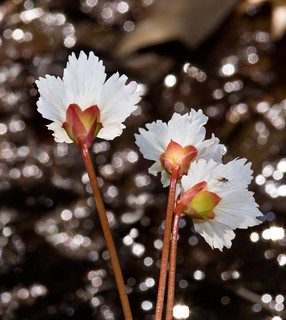 |
For some strange reason, though, the flowers seem to point toward the water… To get a good shot from the front of these, you have to get your feet wet!
Frequently, you can find large groups of flowers coming from what appears to be a single plant:
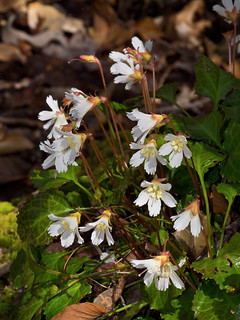 |
 |
In 2008, I found an exceedingly rare pink-flowered one secreted back in a seep at this location:
 |
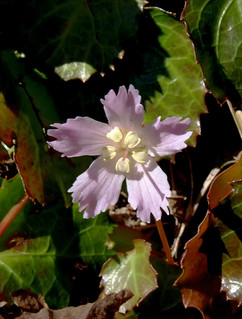 |
So, this year, I was lucky to find this one blooming in a secluded spot next to the stream:
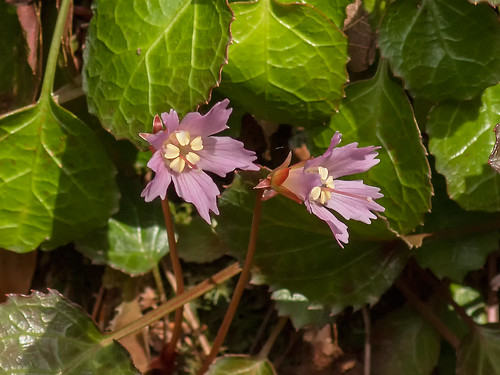
Here are some more shots of the “standard” white-flowered form:
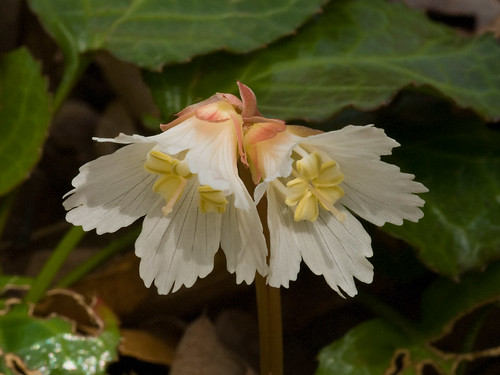
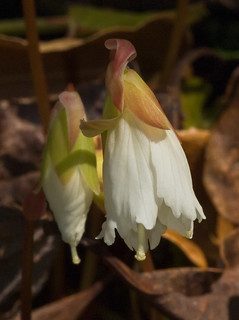 |
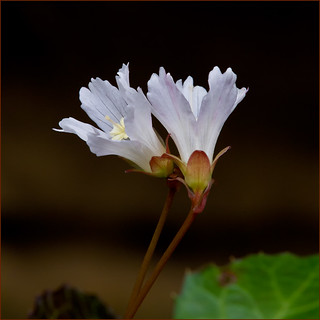 |
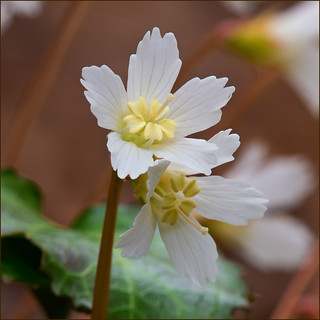 |
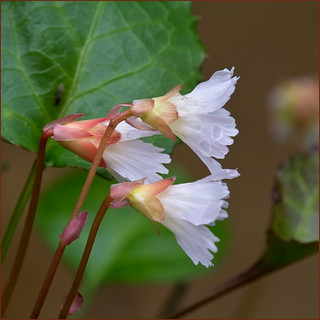 |
I’m often asked why I go back year after year and take pictures of the same plants. I guess my only respose can be that I never know when I’m going to get that “perfect” shot. Since achieving perfection is impossible, I expect that you will see me at Devil’s Fork next March and each March thereafter, when the delicate white flowers of the Oconee Bells start to bloom…
— Jim

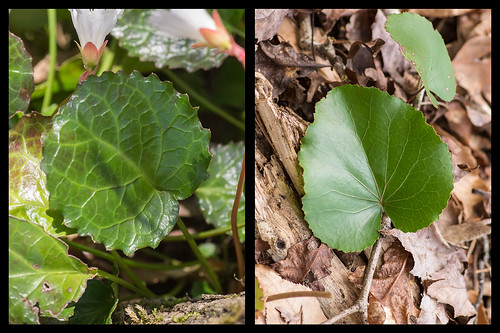
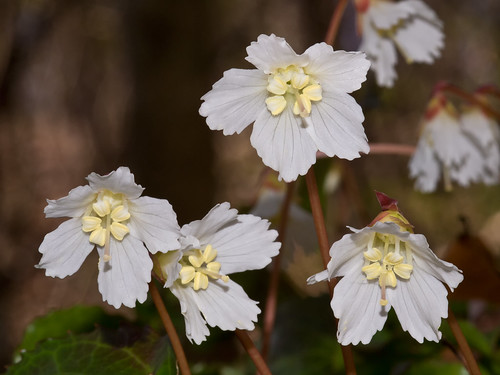
0 Responses
Wonderful and interesting blog post as always Jim!
An exceptional set of images!
Thanks for the article and pictures. I missed seeing them this year. Hope to see them in the next. I have seen them growing at Camp Thornwell which is near Camp for the Blind.
How can I know when the Shortia galacifolia, Oconee bells, are blooming so I know when to come see them?